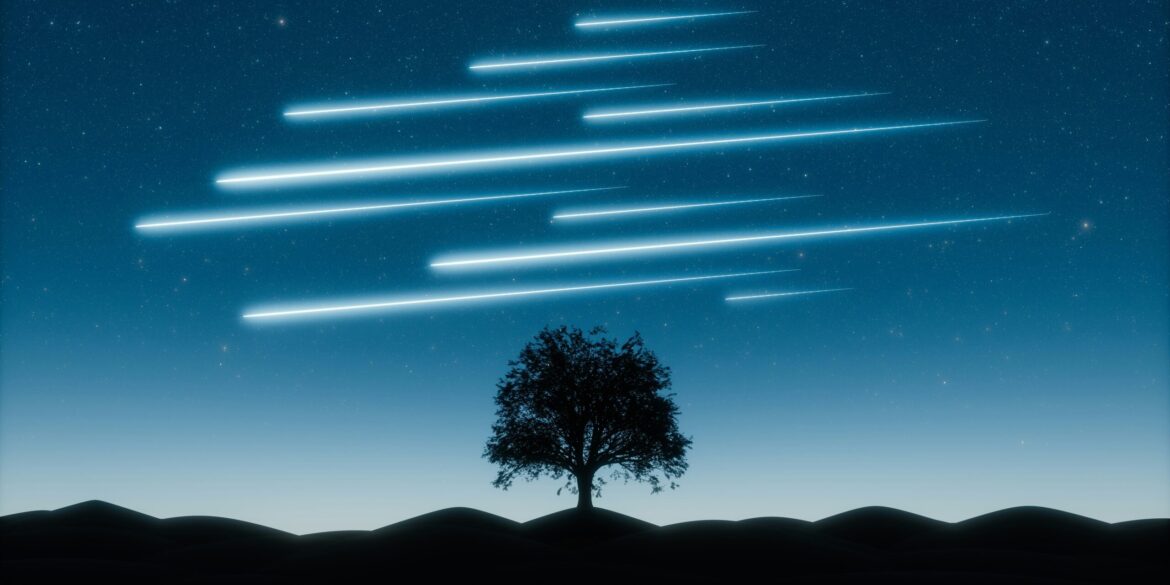On the night of August 12, 2025, skywatchers across the United States were treated to one of the most anticipated celestial events of the year as the Perseid meteor shower reached its peak. This annual spectacle, known for its brilliant streaks of light across the night sky, did not disappoint. Despite the challenges posed by a bright, nearly full moon, which often makes it difficult to see fainter meteors, observers in areas with minimal light pollution reported sightings of up to 20 meteors per hour. The Perseids, originating from the debris left behind by the passing of Comet Swift-Tuttle, are known for their brilliance, consistency, and frequent bursts of meteoric activity, making them a favorite among stargazers and casual skywatchers alike.
The Perseids are an iconic meteor shower, with meteors typically appearing as bright streaks of light that cut across the night sky. These meteors burn up as they enter Earth’s atmosphere, creating a beautiful and fleeting display. This year, the Perseids once again lived up to their reputation, and skywatchers across the country, from rural areas to suburban backyards, had the opportunity to witness this natural marvel. The meteor shower’s predictable nature and frequency make it a special occasion every August, allowing both seasoned astronomers and casual stargazers to appreciate the beauty and scale of the universe.
What made this year’s Perseid meteor shower even more remarkable was the rare conjunction of two of the brightest planets in the night sky—Venus and Jupiter. The alignment of these two planets added an extra layer of visual appeal to the meteor shower. These planets, both of which are visible to the naked eye, are often visible in the evening sky, but their simultaneous proximity created a stunning backdrop against the meteor streaks. The rare conjunction, occurring alongside the meteor shower, made it a unique opportunity to observe multiple astronomical events in one night, creating a perfect storm for skywatching enthusiasts.
While the nearly full moon did present some challenges in terms of visibility, experts advised skywatchers to seek out locations with minimal light pollution for the best experience. Areas far from city lights, such as national parks, rural countryside, or even dark corners of suburban areas, offered the clearest views of the meteor shower. In addition to selecting the right location, experts recommended allowing at least 30 minutes for your eyes to fully adjust to the darkness. This helps skywatchers catch the faintest of meteors and enjoy the full range of the Perseid’s display. With time, the human eye becomes more sensitive to dim light, enhancing the experience as meteors streak across the sky.
The Perseid meteor shower, while peaking in mid-August, is expected to remain visible until August 24, 2025. This extended period gives skywatchers additional opportunities to catch a glimpse of the meteors if they missed the peak or want to enjoy more celestial activity in the following days. While the peak nights of the shower often bring the highest frequency of meteors, the ongoing visibility provides ample time for stargazers to witness a variety of meteor types, from slow-moving fireballs to quick, sharp streaks of light.
The 2025 Perseid meteor shower will undoubtedly be remembered as a beautiful, awe-inspiring event. It was an occasion to step outside, look up at the night sky, and contemplate the wonders of the universe. Whether you’re an avid astronomer with a telescope or a casual observer enjoying the moment with friends and family, the Perseids offer a unique opportunity to connect with nature and the cosmos. For those who missed the peak or want to experience the meteor shower again, the nights ahead still provide the chance to witness the beauty of these cosmic visitors.
In addition to the meteors, the conjunction of Venus and Jupiter provided an added visual delight for those lucky enough to see both the meteors and the planets together. For many, this event was a reminder of the vastness of the universe and how small moments like these can offer an awe-inspiring perspective on the cosmos. As we continue to witness these celestial events, the Perseid meteor shower serves as a beautiful reminder of the ongoing, intricate movements in the universe that shape our night skies.
Overall, the 2025 Perseid meteor shower provided an unforgettable experience for all who were able to witness it. From seasoned astronomers to casual onlookers, it was a night to celebrate the marvels of the universe and enjoy a shared sense of wonder.

